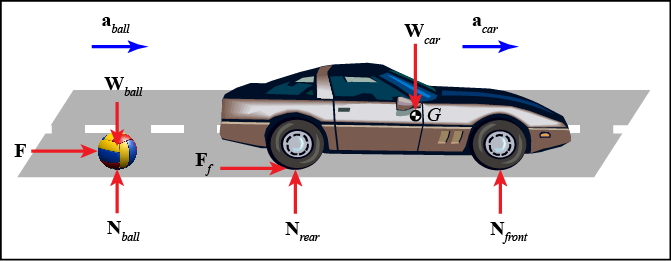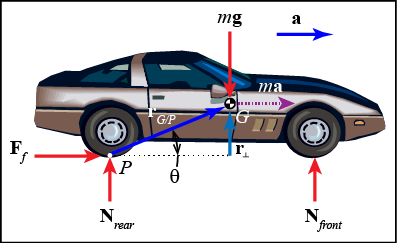Pure Translation
Translation of a rigid body

Referring to the above figure, why can the ball be modeled as a particle? Why does the car need to be modeled as a rigid body?
Newton's second law for a rigid body
If a rigid body is rotating, different locations on a rigid body may have different accelerations. This is why the acceleration in Newton's second law is the acceleration of the body's center of mass. However, when a body is only translating, the acceleration of every point on the body will be the same.
∑F = maG
Moment equation for a rigid body
The sum of the moments acting on a rigid body undergoing pure translation is non-zero unless the reference point is the center of mass (G). If the moments are summed about an arbitrary point P, the resultant moment will equal the "moment" that the effective force (ma) creates about P (see figure). Note that this is not a real moment, but it is a convenient way to think about it.

∑MP = rG/P x ma or ∑MG = 0
